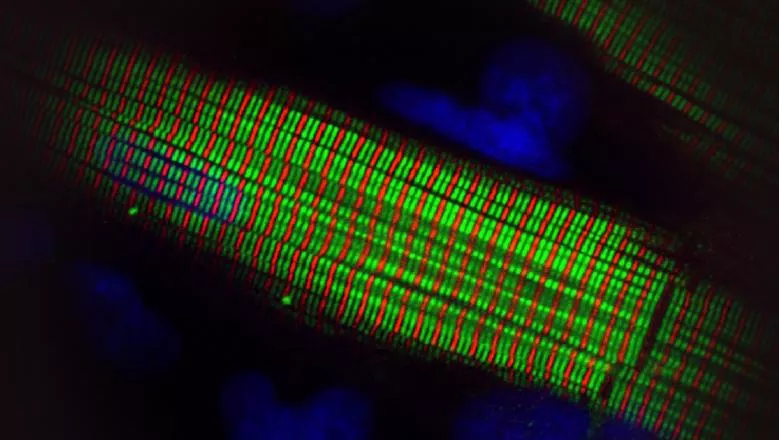Theories about the molecular basis of the Frank-Starling Law of the Heart have been puzzling and controversial. Our results show that the myosin-based regulation of heart contractility underlies this phenomenon and can potentially be targeted for treating heart failure'
Dr Luca Fusi
26 April 2021
New research illustrates the role of myosin in heart contractility
Recent research by the Randall Centre for Cell and Molecular Biophysics provides evidence for the role of myosin-based regulation in the potentiation of heart contractility induced by stretch.

For many decades the contraction of the heart was thought to be solely controlled by structural changes in the actin filament, triggered by an increase in calcium concentration in the muscle cell. Researchers from the School of Basic and Medical Biosciences have discovered that, in contrast to this view, the contraction and relaxation of the heart are largely controlled by regulatory structural changes in the myosin filament.
In their latest paper, the team from the Randall Centre for Cell and Molecular Biophysics investigated the contribution of this myosin-based regulation to the Frank-Starling law of the heart.
The efficiency of the heart as a pump depends on the Frank-Starling law of the heart, which states that the strength of the heartbeat increases in response to an increase in the volume of blood in the ventricles. At the cellular level the contraction is generated by reciprocal sliding of actin and myosin filaments driven by myosin motors, but the molecular basis of the Frank-Starling mechanism is not understood.
Dr Luca Fusi, Sir Henry Dale Fellow and one of the authors of the paper said:
The team used fluorescent probes on myosin in heart muscle cells to investigate the molecular mechanism of this phenomenon. They found that in the resting phase of the heart cycle between beats, most of the myosin motors are shut down onto the surface of the myosin filament. These myosin motors can be activated by stretching the heart muscle cells at intracellular calcium concentrations which partially activate the actin filaments. The stretch-induced activation of the myosin filament increases the number of myosin motors that are available for the interaction with the actin filament and, therefore, the strength of contraction of the heart muscle cell.
Because the Frank-Starling mechanism might be depressed or absent in failing human heart, this myosin-based regulation of cardiac contractility represents a primary target for the development of new pharmacological approaches to treat heart failure.
Future research by the Fusi group will be focused on the role of myosin-based regulation in heart diseases, and on the effect of drugs targeting myosin filament proteins to treat heart failure in those diseases.
Read the full paper, published by PNAS: Stress-dependent activation of myosin in the heart requires thin filament activation and thick filament mechanosensing

